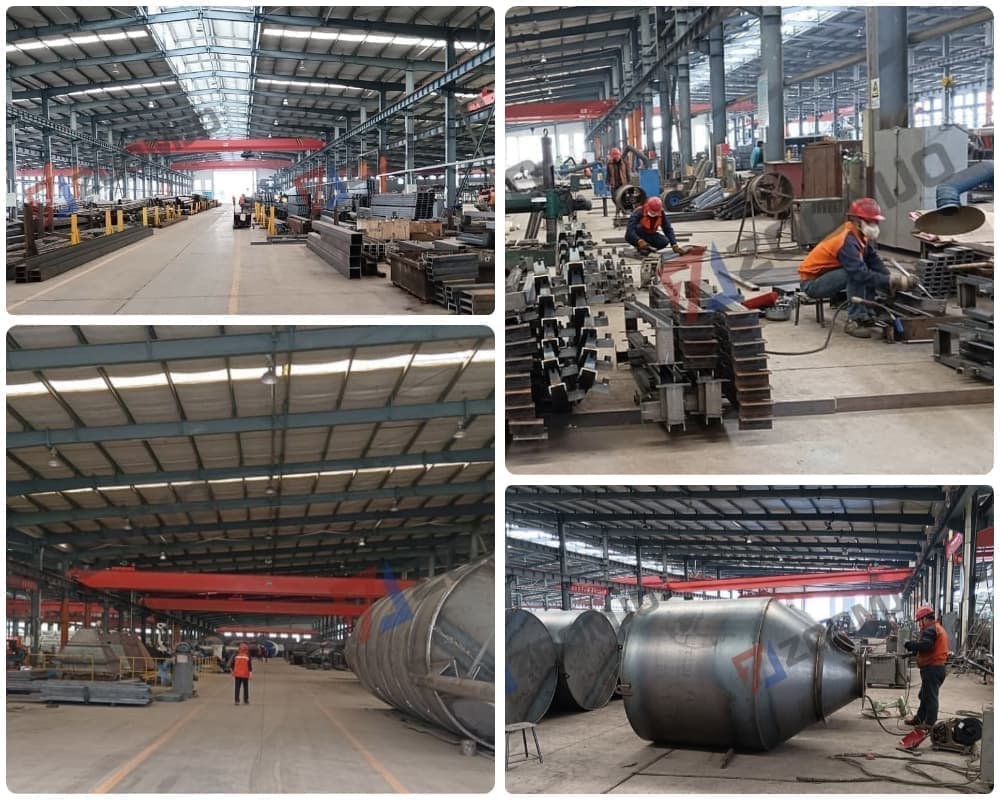Dry Type Concrete Batching Plants For Sale

In the modern construction industry, the efficiency of concrete production and transport directly affects the progress and cost of the project.ZOOMJO dry concrete mixing plant, as an emerging concrete production equipment, is becoming a popular choice in the market due to its unique design and significant economic benefits.
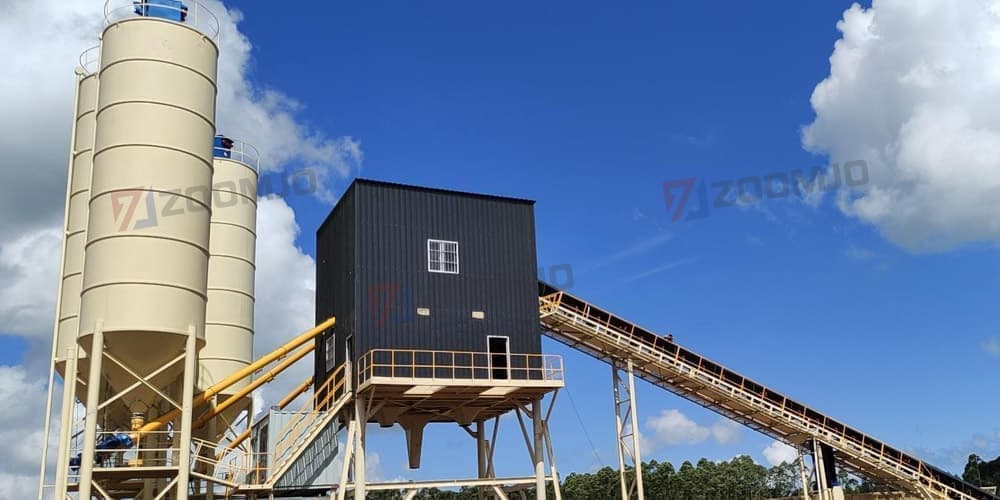
Dry concrete mixing plants are particularly suitable for situations where the construction site is far away, and can effectively reduce transport costs and operating expenses. Their production capacity ranges from 60 cubic metres to 120 cubic metres per hour, enabling them to meet the needs of projects of different sizes. This flexibility has led to the widespread use of dry mixing plants in large-scale infrastructure construction, residential projects, as well as bridges and motorways.
The working principle of a dry concrete mixing plant
ZOOMJO Dry Concrete Batching Plants do not contain a mixer in the traditional sense, but instead use an innovative method of transferring the concrete ingredients directly into the mixer truck after weighing. This design allows the mixing of the concrete compounds to be done in the mixer truck, rather than in the mixing plant. During each production cycle, the automated system accurately weighs the aggregates, cement, additives and water and discharges them into the mixer truck. This approach not only increases production efficiency, but also ensures consistent concrete quality.
Components of a Dry Concrete Batching Plant
A dry concrete plant consists of several key components that work together to increase productivity, ensure product quality and reduce operating costs. Properly configuring these core facilities will significantly improve the overall efficiency of your project. Below are the key components of a dry concrete batching plant and their functions:
Aggregate Batcher
Aggregate batching plant is the core part of a dry concrete mixing plant, responsible for weighing and distributing different types of aggregates (e.g. sand, gravel) according to a set ratio. Modern aggregate batchers usually adopt advanced automated control systems to ensure high accuracy and fast batching, thus enhancing overall production efficiency.
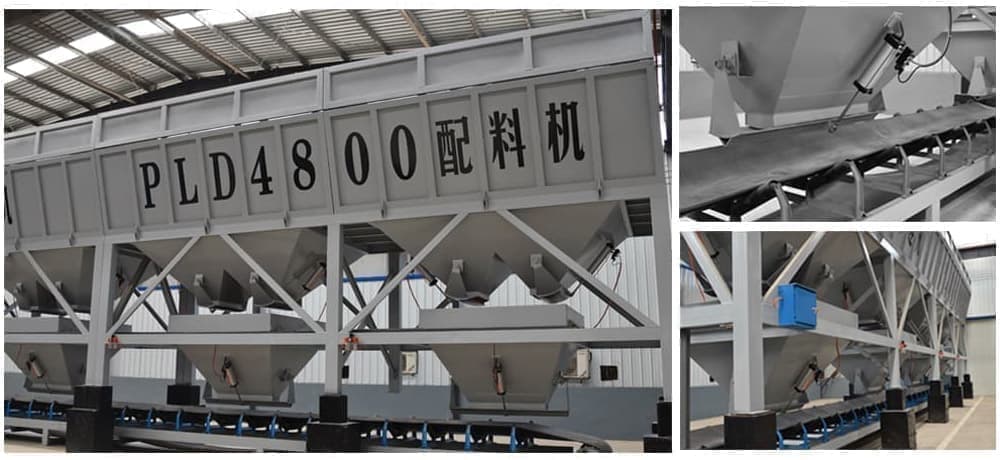
Belt Conveyor
A belt conveyor is used to transport aggregates from the storage area to the mixer truck or other equipment. It offers the advantage of efficient, long-distance conveying to transfer raw materials quickly and accurately to the designated location. The design needs to take into account the conveying distance and the angle of inclination to ensure a smooth flow of material.
Cement Silos
Cement silos are used to store cement and are an integral part of a dry concrete mixing plant. The silo should be well sealed to prevent moisture and waste of cement. Their capacity is usually customised according to the project requirements to ensure that they are able to meet the production needs even during peak periods.
Weighing system
The weighing system is an important aspect that affects the quality and cost of concrete. It is usually divided into three sections - aggregate weighing, powder weighing and liquid weighing - which can be operated simultaneously and controlled by a computer. This system ensures accurate proportioning of the various raw materials, thus guaranteeing the quality and consistency of the concrete.
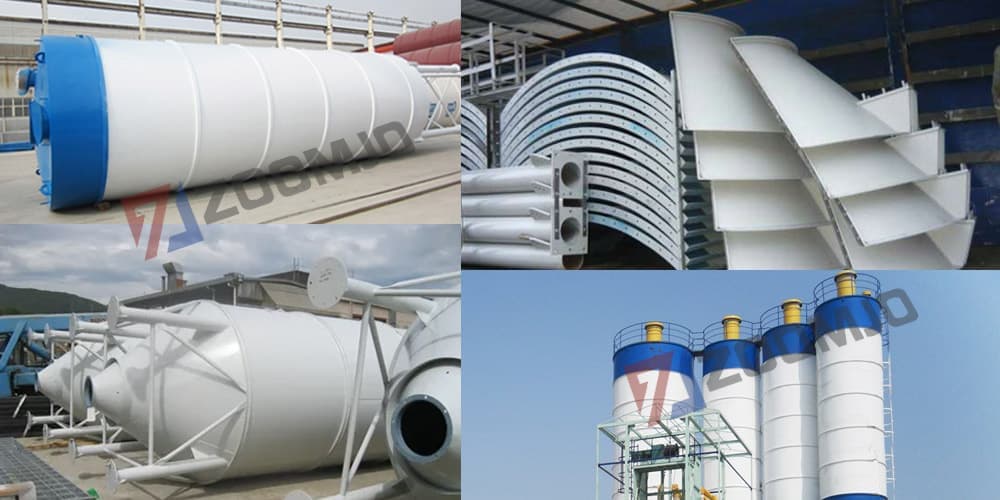
Batching System
The batching system is responsible for mixing different types of raw materials (e.g. sand, rock, cement, etc.) in a set proportion. Modern dry concrete mixing plants usually use highly efficient automated batchers that can handle multiple types of aggregates and increase efficiency.
Conveying System
The conveying system consists of several parts, including aggregate conveying and liquid conveying. Aggregates are conveyed via belts, while liquids (such as water and admixtures) are conveyed via pumps. In addition, the finished concrete is conveyed from the mixing plant to the mixer truck via screw conveyor for transport to the construction site.
Control System
The control system is the ‘brain’ of the dry concrete plant, responsible for monitoring and managing the entire production process. Modern control systems usually adopt PLC (Programmable Logic Controller), which can realise fully automated operation and provide real-time data monitoring to ensure the stability and safety of the production process.
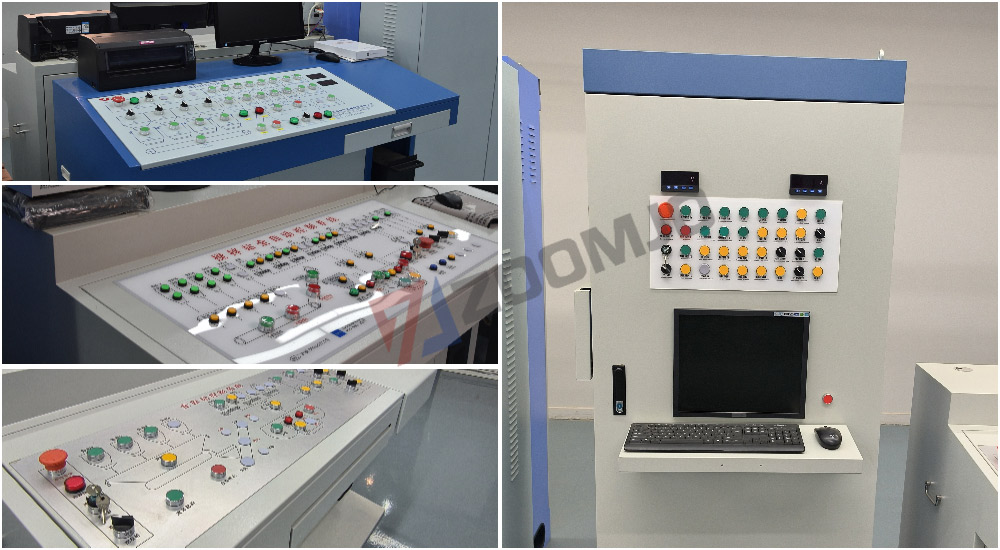
Dust removal equipment
As dust may be generated during the dry concrete mixing process, it is essential to have effective dust removal equipment. This not only helps to protect workers' health, but also reduces the impact on the environment. Common dust removal equipment includes bag filter and wet dust collector.
The main advantages of dry batching plants
ZOOMJO dry concrete batching plants offer several significant advantages:
-
Economical and efficient: Compared with traditional wet batching plants, dry batching plants have lower initial investment and operating costs, and are easier to maintain, providing customers with substantial cost savings.
-
Flexible and Convenient: Modular design, quick installation, flexible adjustment of the configuration according to the project requirements, and adapt to a variety of construction environments.
-
High degree of automation: Adopting advanced automation control system to realise accurate batching and efficient production, reduce manual intervention and improve production efficiency.
-
Environmental protection and energy saving: adopting advanced dust removal and noise reduction technology, effectively reducing the impact on the environment and meeting the requirements of modern environmental protection.
Hot dry concrete mixing plant parameters
| Component | ZJY-100 Specification | ZJY-60 Specification |
|---|---|---|
| Aggregate Hopper Volume | 4 x 20 m³ | 4 x 20 m³ |
| Aggregate Weighing Hopper | 3 m³ | 1.5 m³ |
| Aggregate Weighing Hopper (Size) | 800 x 13.000 mm | 600 x 13.000 mm |
| Aggregate Transfer Conveyor | 800 x 18.000 mm | 600 x 18.000 mm |
| Cement Weighing Hopper | 1.200 kg | 600 kg |
| Water Weighing Hopper | 600 lt | 300 lt |
| Additive Weighing Hopper | 30 lt | 20 lt |
| Air Compressor | 300 lt, 5.5 kW | 300 lt, 5.5 kW |
| Cement Silo | Optional from 50 to 500 tonnes capacity. | Optional from 50 to 500 tonnes capacity. |
| Control Type | FULL AUTOMATIC | FULL AUTOMATIC |
| Production Capacity | 100 m³/h | 60 m³/h |
| Weight | 33 tonnes without cement silo | 27 tonnes without cement silo |
| Total Motor Power | 75 kW | 40 kW |
| Electric Generator Requirement | 100 kVA | 80 kVA |
| Required area to operate | 700 m² | 700 m² |
Widely used to meet diversified needs
ZOOMJO dry concrete mixing plant is widely used in various construction projects, such as:
-
Large-scale infrastructure construction: dams, highways, bridges and other large-scale projects require high quality and stability of concrete supply, and dry mixing plant can provide reliable guarantee.
-
Real estate development: Residential communities, commercial buildings and other projects have high requirements for concrete supply and quality, and dry mixing plants can meet diversified needs.
-
Municipal Engineering: Municipal engineering projects such as roads and pipeline networks have high requirements on the fluidity and durability of concrete, and dry mixing plants can provide high-quality concrete products.
ZOOMJO Dry Concrete Batching Plant Manufacturer
As a renowned brand in the industry, ZOOMJO has always been committed to providing high quality, reliable and innovative products. Our Dry Concrete Batching Plant meets international quality standards and undergoes stringent quality control processes. In addition, we provide comprehensive after-sales technical support and spare parts services to ensure that our customers' plants continue to operate efficiently.
If you are looking for an efficient, cost-effective and user-friendly solution for concrete production, ZOOMJO dry concrete mixing plants are the best choice for you. We look forward to working with you to advance the construction industry. For more information, please feel free to contact us and our professional team will provide you with the most suitable solution.

 English
English  Español
Español  简体中文
简体中文  Pусский
Pусский  українська
українська 